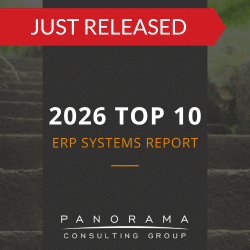- The records management project delay at the Houston Police Department underscores the cascading operational and legal risks of a public safety software implementation.
- Police department software implementation success often turns on frontline alignment and sustained change leadership.
- Government ERP delay becomes more likely when governance structures fail to keep pace with expanding stakeholder demands and evolving requirements.
Most public safety leaders do not expect to experience a records management project delay. Yet in government ERP initiatives, particularly police department software implementations, delays often become the defining chapter rather than an isolated setback.
Today, we’ll reflect on lessons learned from a recent public safety software implementation involving the Houston Police Department (HPD). From an ERP advisory vantage point, the HPD story is a case study in what happens when complex requirements and aggressive timelines collide.
Contemplating litigation?
We have multiple software expert witnesses available for provision of reports, depositions, and testimonies.
Lessons From the Houston Police Department Software Implementation
Police departments rarely implement ERP systems in the traditional sense, but when they deploy computer-aided dispatch (CAD), records management systems (RMS), or integrated public safety software, these often function as core ERP platforms. They consolidate operations, case records, resource planning, and compliance reporting under a unified digital environment.
Like traditional ERP rollouts, police department software implementations carry familiar risks. Here are four lessons learned from the Houston Police Department software implementation:
1. Alignment With Front-Line Reality Determines Success or Failure
One root cause of this records management project delay was that system design assumptions reflected command staff objectives more than officer workflows.
As a result, front-line officers encountered new data entry requirements that were incompatible with patrol realities (small-screen mobile units and time pressure during incident response).
For public safety software implementation to succeed, business process mapping must be based on operational truths and on-the-ground nuances. We always tell clients to involve end-users in process mapping to capture these nuances.
For example, officers who write reports in parked vehicles after midnight understand operational barriers to a different extent than administrators do. These officers must be included in system design decisions.
Similarly, if you’re implementing an ERP system for manufacturing, you might involve plant supervisors in process mapping so you can identify gaps invisible to corporate leadership.
2. Governance May Falter as the Project Scales
When new stakeholders emerged midway through the Houston Police Department’s software project, decision authority blurred and timelines slipped. This was a textbook case of “outgrowing the original implementation plan.”
A formal checkpoint to reassess governance and resource alignment could have prevented project failure.
3. Change Leadership Cannot Be Outsourced
Patrol units expected mobile efficiencies, yet early field reports described slower entry screens and uncertain system availability.
When the street-level user experience deteriorates, even a technically “live” system becomes a paperweight. It aggravates users so much that they choose workarounds over system usage.
No ERP consulting services firm, no matter how reputable, can replace the role of internal change leadership in maximizing system usage. Leaders across functional areas must demonstrate buy-in and garner user trust.
Change leadership is especially critical in the context of government ERP delays. Elected officials, department chiefs, and city IT leaders must sustain internal sponsorship throughout the full implementation lifecycle.
4. Data Stewardship Should be Top Priority
Records management systems (RMS) replacements demand meticulous migration of decades-old incident reports, arrest files, and evidence logs.
The HPD system reportedly went live with mismatched fields and incomplete case histories, forcing prosecutors to drop charges rather than risk wrongful convictions.
We always tell clients to prioritize data quality by building data governance into the project charter and empowering the steering committee to block go-live until data validation succeeds.
Learn More About Failed Software Implementations
Whether implementing ERP solutions for manufacturing or records management systems for policing, success hinges on four interconnected levers: People, Processes, Technology, and Data.
When manufacturing ERP implementations are delayed, production planners revert to spreadsheets and organizational trust in the transformation initiative erodes. In government, such failures are not contained within corporate walls; they become matters of public record, affecting trust in the department itself.
If your organization is approaching a high-stakes software implementation, ask yourself:
- Do we truly understand the daily realities of our end-users?
- Have we built vendor partnerships based on accountability and mutual success?
- And finally, do we have the humility to seek independent perspectives before we commit?
Our ERP consultants can help answer these questions. Contact us to learn more.















